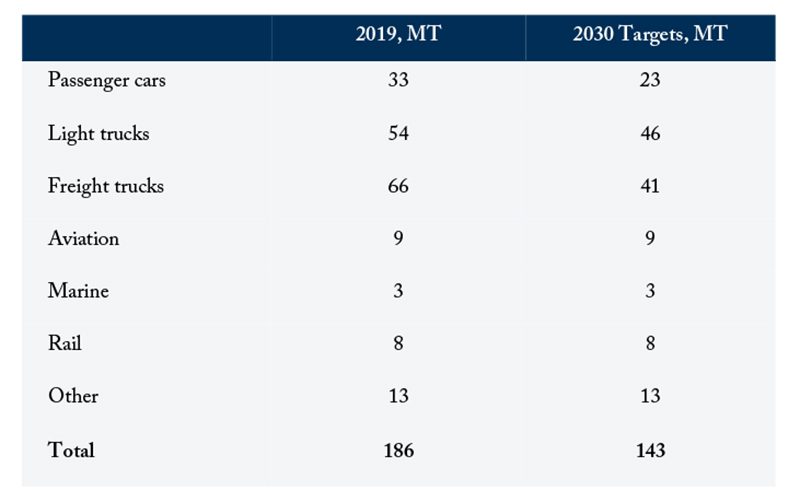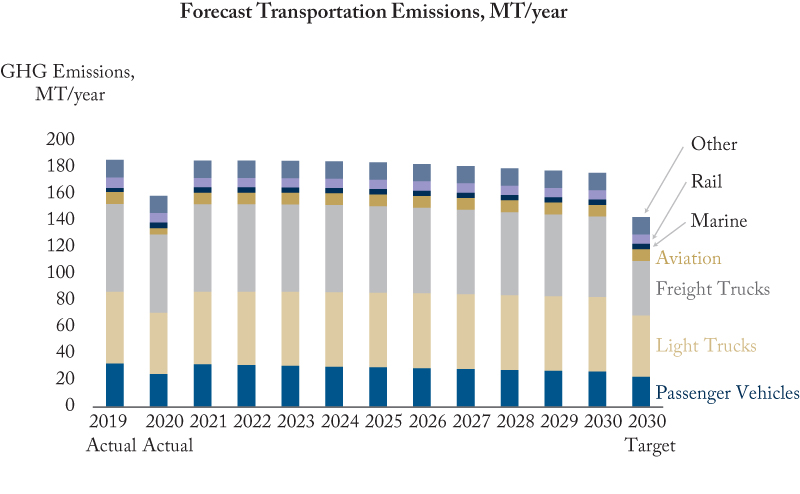To: The Hon. Steven Guilbeault, Minister of Environment and Climate Change
From: Brian Livingston
Date: December 13, 2022
Re: Counting Carbon: A Reality Check on Our Emission Reduction Plan
The federal government’s ambitious Emissions Reduction Plan (ERP) last March set out targets for seven sectors that make up the total Canadian greenhouse gas emissions. It aims to cut 2030 emissions by 42 percent from 2019 levels. But the ERP is merely a plan to have a plan. It contains no specific steps to meet its targets, or any mechanism for measuring the progress towards such targets on a year-by-year basis.
This special series of Intelligence Memos introduces seven forecast models tailored to each sector that provide a realistic assessment of what’s needed to meet Ottawa’s goals, and each sector’s key variables to emission reductions. These will be used to predict annual emissions from each sector from 2020 to 2030. The charts and spreadsheets underlying this work can be found here.
Today we start with transportation.
Virtually every form of transport in Canada uses liquid hydrocarbon fuels in the form of gasoline, diesel fuel and aviation fuel. Electric vehicles have made significant inroads in passenger car sales – about 8 percent in the first quarter of 2022 – less in light trucks and virtually none to date in heavy freight trucks. Planes, trains and ships also continue to be mostly propelled by hydrocarbon fuels.
Ottawa has set a 2030 target of 143 million tonnes (MT), which will almost all need to come from cars and trucks as seen the table below.

These reductions will have to come from the replacement of internal combustion engine (ICE) vehicles with battery electric vehicles (EV), or from the use of renewable hydrocarbon fuels.
The major supply challenge is manufacturing capacity. Our forecast model tracks manufacturing capacity between now and 2030. It is based on manufacturing capacity projected by car and truck builders, as opposed to theoretical exponential growth. EV sales require plants to build the EVs.
The second challenge is to turn over the existing fleet of fuel-burning vehicles.
The current passenger car fleet in Canada is approximately 12.3 million automobiles, of which only 200,000 are electric. Sales of passenger vehicles in recent years have dropped dramatically as consumers have switched to light trucks. Passenger car sale in 2021 were 324,000 vehicles, of which 28,000 (9 percent of sales) were EVs, mostly in Quebec, B.C. and Ontario. The remaining sales were 270,000 ICE vehicles (83 percent of sales) and 26,000 hybrids (8 percent of sales).
The forecast for passenger car sales in 2030 is 159,000 BEVs, with a fleet of 1 million EVs and 10.7 million ICE vehicles. Emissions per ICE passenger car decrease by 1 percent a year due to renewable fuels. Emissions in 2030 for passenger cars are forecast to be 27 MT versus the 23 MT target.
Next, light trucks. Light truck sales in 2020 were about 1.25 million, and the fleet size was 10.25 million. The model uses a similar methodology, and forecasts electric light truck sales of 153,000 in 2030, and a fleet of 1 million EVs and 11.5 million ICE trucks. Light truck emissions are forecast to be 56 MT versus the target of 46 MT.
Finally, freight trucks. Emissions from large freight trucks average more than 20 times auto emissions. There are currently very few electric freight trucks. Freight truck sales in 2020 were about 100,000 (almost all ICE), and the fleet size was 1.1 million. The model forecasts electric freight truck sales of 24,000 in 2030, joining a fleet of 130,000 EVs and 1.1 million ICE freight trucks, and emissions of 61 MT versus the target of 41 MT target.
The bottom line is, the forecast for total transportation sector emissions in 2030 is 177 MT, 34 MT above the ERP target of 143 MT.

Brian Livingston is Executive Fellow at the School of Public Policy at the University of Calgary.
Counting Carbon is a four part series analyzing Canada's Emission Reduction Plan.
To read part two on Oil and Gas, click here.
To send a comment or leave feedback, email us at blog@cdhowe.org.
The views expressed here are those of the author. The C.D. Howe Institute does not take corporate positions on policy matters.





